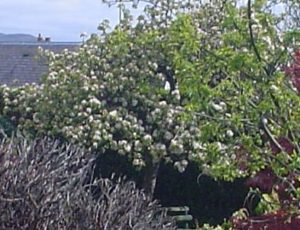
I live in a village which keeps the last remnants of ancient monastic orchards, and we still have a lot of fruit trees. When I first came here, ‘plundering’ was a regular amusement for boys from across the river, and you would find dropped apples on the bridge wherever some irate gardener had chased them. In the last year or two, a local group has planted a community orchard, and it is nice to think we are continuing an old tradition.
This is the plant * called crab apple
A seal sent this * over the sea-waves
for the healing * of alien infections.
These nine prevail * against the nine plagues.
A worm came creeping * a man slaughtered it.
Then Woden took * nine herbs of wonder.
He cut the adder * into nine pieces
apple and illness * fought it out
so that illness would never * abide in his house.
Nine herbs for the nine plagues, and at last a bit of genuine magic and paganism. Two lines later, however, we are back into the Christian references. It all reminds me of the man in the saga who was a Christian but invoked Thor during thunderstorms and in times of stress.
Too sour for munching from the tree, crab-apples have been used for cider and vinegar, and in jelly. The vinegar is often used as an anti-inflammatory, for the treatment of arthritis and gout, and a gargle with cider vinegar will often help a sore throat. Apples are also comforting to upset stomachs, strengthening the liver and digestion. They were often mixed with spices to add to the effect, and for a while their scent was believed to dispel infections.
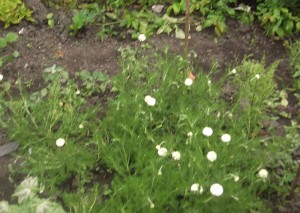 Remember now chamomile * what you made known
Remember now chamomile * what you made known


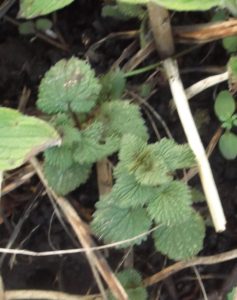
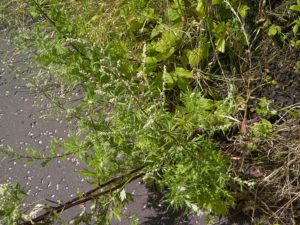


 I have been slack this year, and the garden is only just beginning to get the attention it needs, but the chives are growing lush and strong.
I have been slack this year, and the garden is only just beginning to get the attention it needs, but the chives are growing lush and strong.
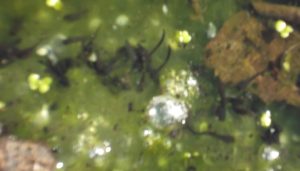 There was a lot of frogspawn, some of which was caught by frost, but you can just see that we have some tadpoles. Last summer very few of them grew up because of the cold and wet, but the weather is more promising – at least so far!
There was a lot of frogspawn, some of which was caught by frost, but you can just see that we have some tadpoles. Last summer very few of them grew up because of the cold and wet, but the weather is more promising – at least so far!